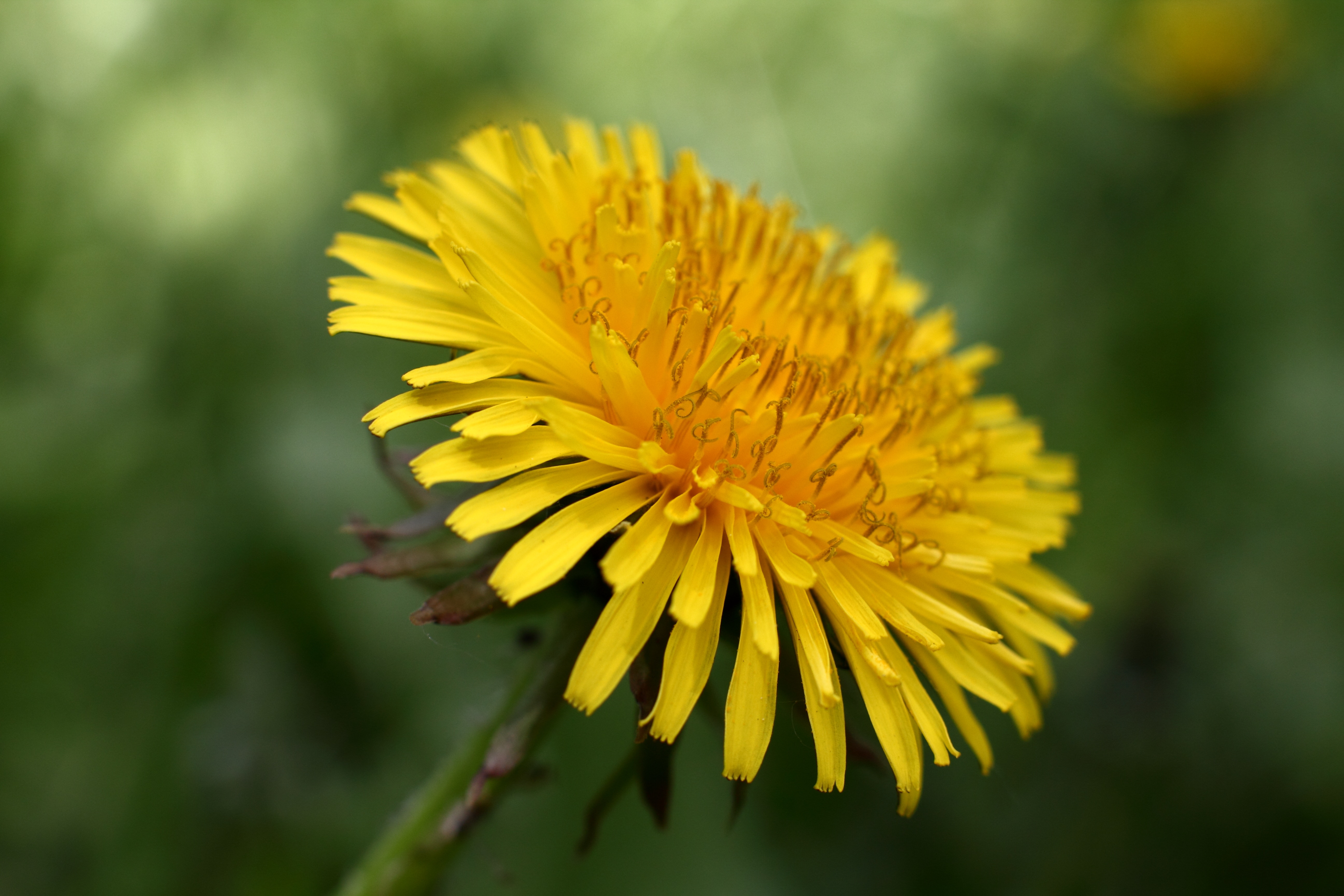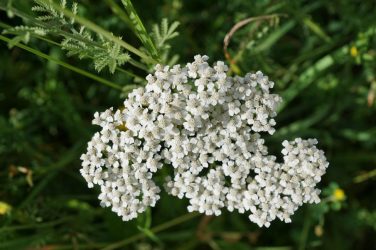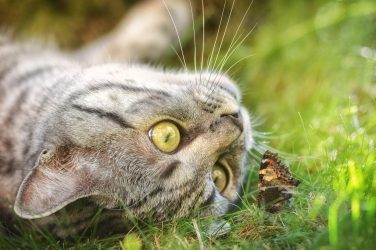by Quinn K Dyer
Know it:
Aliases of the dandelion include lion’s tooth or dent-de-lion, piss-a-beds, fairy clocks, cankerwort, puffball, blowball, and wild endive.
All parts of the dandelion are useful and edible; roots, flowers, leaves, and stems.
It’s funny how so many useful plants fall into the category of “weeds” just because they pop up where they haven’t been purposely planted.
Mugwort, nettles, chickweed, and clover all fall into this category, but none are as recognizable as the dandelion.
People actively spray harmful chemicals into their yards to rid themselves of some of their most beneficial plant buddies.
Hard to image when fresh veggies can easily empty your wallet at the grocery store that more people aren’t harvesting their lawns’ dandelions at every opportunity.
They make a tastier salad than lettuce does, in my opinion anyways.
Dandelions aren’t just edible either. The lore of children tells us blowing the seeds off a dandelion puff will carry a wish for you.
But they’re also medicinal and beneficial to gardens.
Magickally, dandelions bring balance. They are symbolic of the sun and the underworld. The flowers have associations with Beltane and Samhain; opposing festivals.
They are also symbolic of luck, happiness and hope.
These cheerful little blossoms burst from cracks in the concrete. And the dandelion’s ability to grow anywhere symbolizes and signifies adaptation and transformation.
The plant itself changes the environment around itself to make itself more at home. It aerates the soil, draws in nutrients, and attracts bees and earthworms.
This little plant holds the power of intentional and incremental transformation.
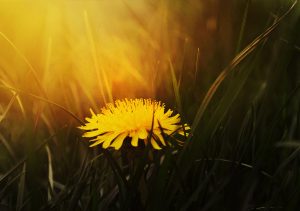
Grow it:
Dandelions are common worldwide with varieties native to Asia, Europe, and North America.
They are easily recognizable, though there are ‘false dandelions,’ and they adapt to many soil conditions.
Dandelions are often abundantly available for wildcrafting.
Leaves should be gathered as soon as they appear to avoid added bitterness. Harvest roots in early spring or late fall.
The tricky part is making sure when you harvest that the area has not been previously sprayed with weedkiller.
Dandelions’ roots are more likely to have absorbed the toxins than have been killed off by it.
While ‘weeds’ like the dandelion are the bane of many, gardens and lawns with a variety of plants tend to be much healthier.
Dandelions roots aerate the soil for other plants and are a good source of pollen for bees and butterflies in early spring.
It’s also important to note that there is an allergy risk!
Not only the pollen in the plant, but the natural latex dandelions secrete when broken can cause a rash!
But don’t be discouraged if allergies to a plant prevent you from using it. Try another plant!
Even the greenest witches aren’t in tune with every plant.
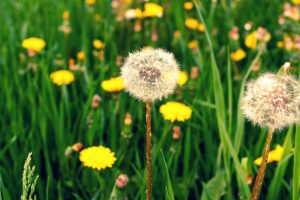
Use it:
Dandelions’ fierce sun-power helps dispel depression. Let the happy little blossoms lift your heart by meditating in a field among the flowers on a sunny day.
Or maybe it’s because dandelions are packed full of nutrients including vitamins C and A, calcium, and potassium.
Our brains can’t function correctly without the right nutrition, so I wouldn’t be surprised.
The leaves can be cooked or eaten raw in a salad, but they are quite bitter for some people.
A dandelion, honey and vinegar tincture can help mask or balance out that bitter taste. It makes a great dressing.
To make the tincture, fill your jar, or jars, 3/4th full with dry material and cover with apple cider vinegar. Strain out plant matter after 3-4 weeks, or until desired taste is reached.
Add honey to taste and store in a cool, dry place.
The roots of the dandelion can be roasted and brewed into a bitter coffee-like tea. They are also one of the ingredients of root beer.
The flower heads can be used to make dandelion wine:
- 3 quarts blossoms
- 1 gallon water
- 3 pounds sugar
- 1 package wine yeast
- 2 sliced lemons or oranges to flavor
Collect blossoms when fully open on a sunny day. Remove green parts as they will ruin the taste. Boil water and steep blossoms for 5 minutes.
Stir in yeast sugar, and citrus.
Pour into a carboy, crockpot or mason jars. Leave to ferment in a cool place for 2 weeks; the bubbles will stop when fermentation finishes
Strain, seal and store. Allow to age at least one week before drinking.
IN CONCLUSION
If this essay resonates with you, please join our WITCH email list by using the forms on this website so we can stay in touch.
About the Author:
 Quinn K. Dyer is a native of Philadelphia, born under Gemini, a witch and a wanderer. She currently spends her time writing and creating art. Check out her website and Instagram.
Quinn K. Dyer is a native of Philadelphia, born under Gemini, a witch and a wanderer. She currently spends her time writing and creating art. Check out her website and Instagram.
all images via Unsplash


